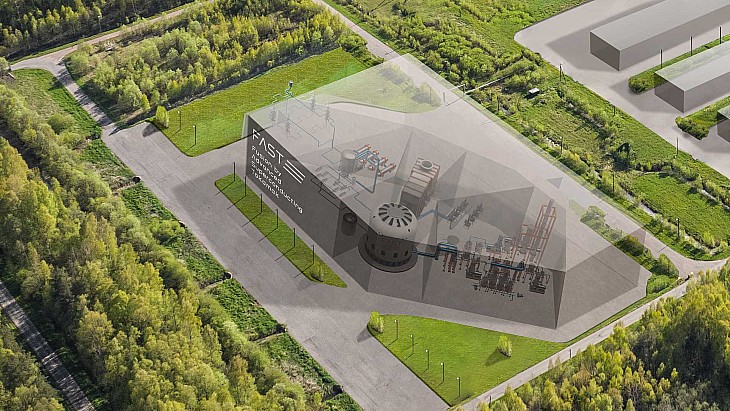Maccs is a fully integrated, engineering-level computer code developed at Sandia for the US Nuclear Regulatory Commission (NRC).
It is used by the nuclear industry world-wide to assess the environmental impact for new and existing nuclear power plants and is also used for assessing the risks of licensing new reactors, especially next-generation nuclear reactors, and informing the industry and regulators about decisions on upgrading existing power plants.
The system uses a site's weather data to determine hypothetical land contamination levels, doses to individuals, health effects and risks on populations based on protective action recommendations, and economic losses resulting from a nuclear power plant accident, and is the only code used by the US regulator to support Level-3 probabilistic risk assessments.
However, the system was initially developed with existing light-water reactors in mind, rather than small modular reactors (SMRs) and advanced reactors are fundamentally different.
"Advanced reactors and small modular reactors are expected to be smaller, therefore leading to an expectation of lower radioactive releases in the case of an accident," said Sandia engineer Jenn Leute.
"With this expectation that releases will be lower, we want to ensure we can model much closer to the point of release, as understanding consequences closer in will become more important. This will allow for decision-makers to make the most informed decisions about new plants and mitigate these very unlikely consequences."
The NRC is developing new regulations to support a risk-informed, technology-inclusive regulatory framework for advanced reactor licensing, and is investigating how Maccs and other tools can help set risk-informed safety criteria that are based on specific consequences, Sandia's John Fulton said.
Fulton manages a Sandia department that has been working since 2016 to improve Maccs' atmospheric models, economic models and the ability to model impacts closer to nuclear power plants.
The programme has over the past five years improved Maccs' near-field modelling capabilities, as well as incorporating improved atmospheric modelling, which enables researchers and regulators to look at how radioactive material would move after an accident either under very specific weather conditions, or under a random representative collection of weather conditions. The code's determinations of economic impacts have also been refined.
Having a full picture of the economic and environmental consequences of a highly unlikely accident at a nuclear power plant allows a more complete comparison of potential new plants' benefits from reliable carbon-neutral electricity and their potential risks, and for refined planning and mitigation strategies for existing plants, Sandia said.
"Maccs models what could happen in an accident," Sandia engineer Dan Clayton said. "This helps the NRC determine whether the reactor design meets current regulations. By using Maccs for these analyses, the NRC can assess what could happen so that they can make an informed decision if the reactor will meet regulatory safety requirements. These improvements will help existing analyses and assessments for new reactors."

.jpg)



_82983.jpg)
_34792.jpg)
_16403_79272.jpg)


_76087_55556.jpg)



